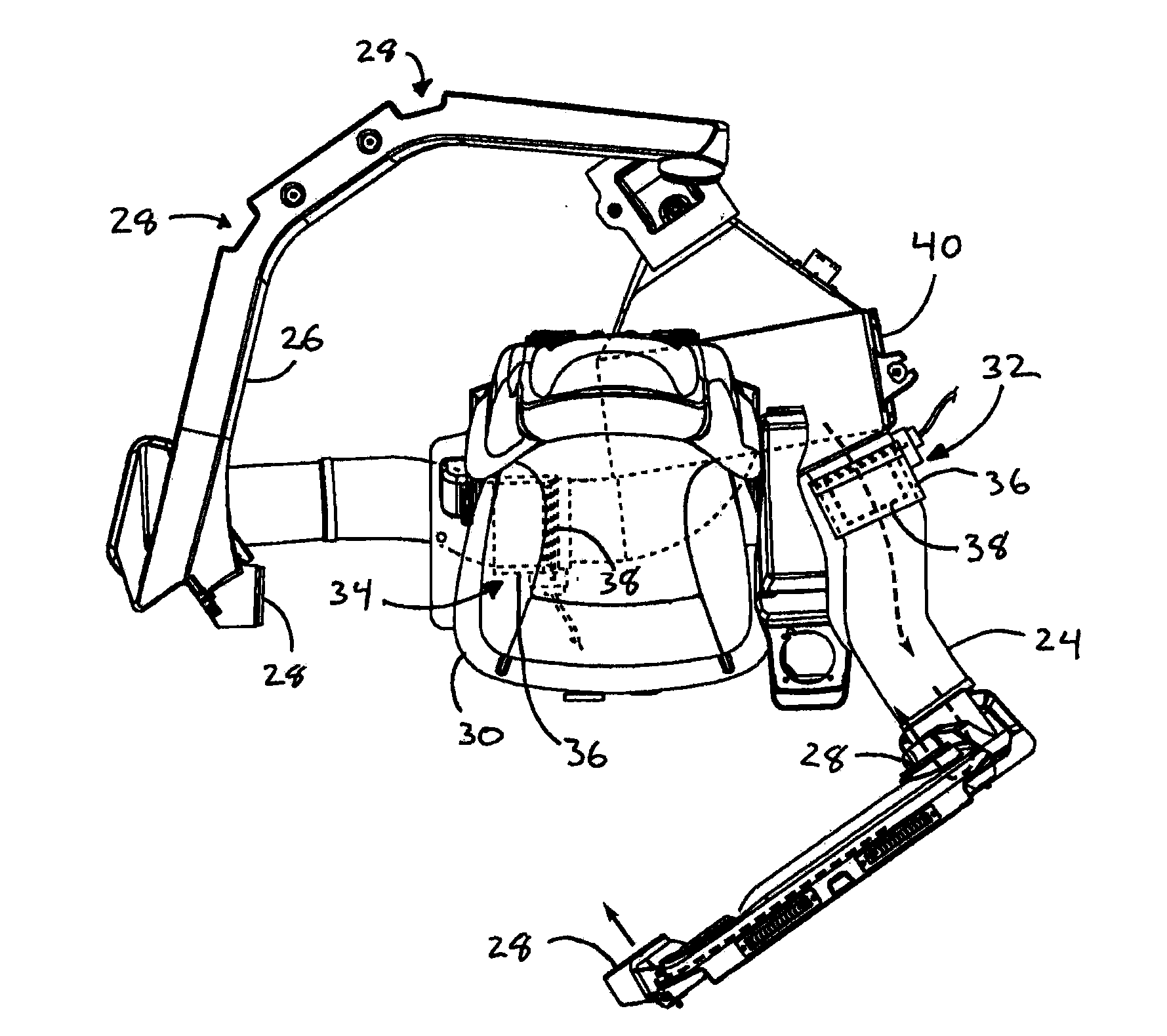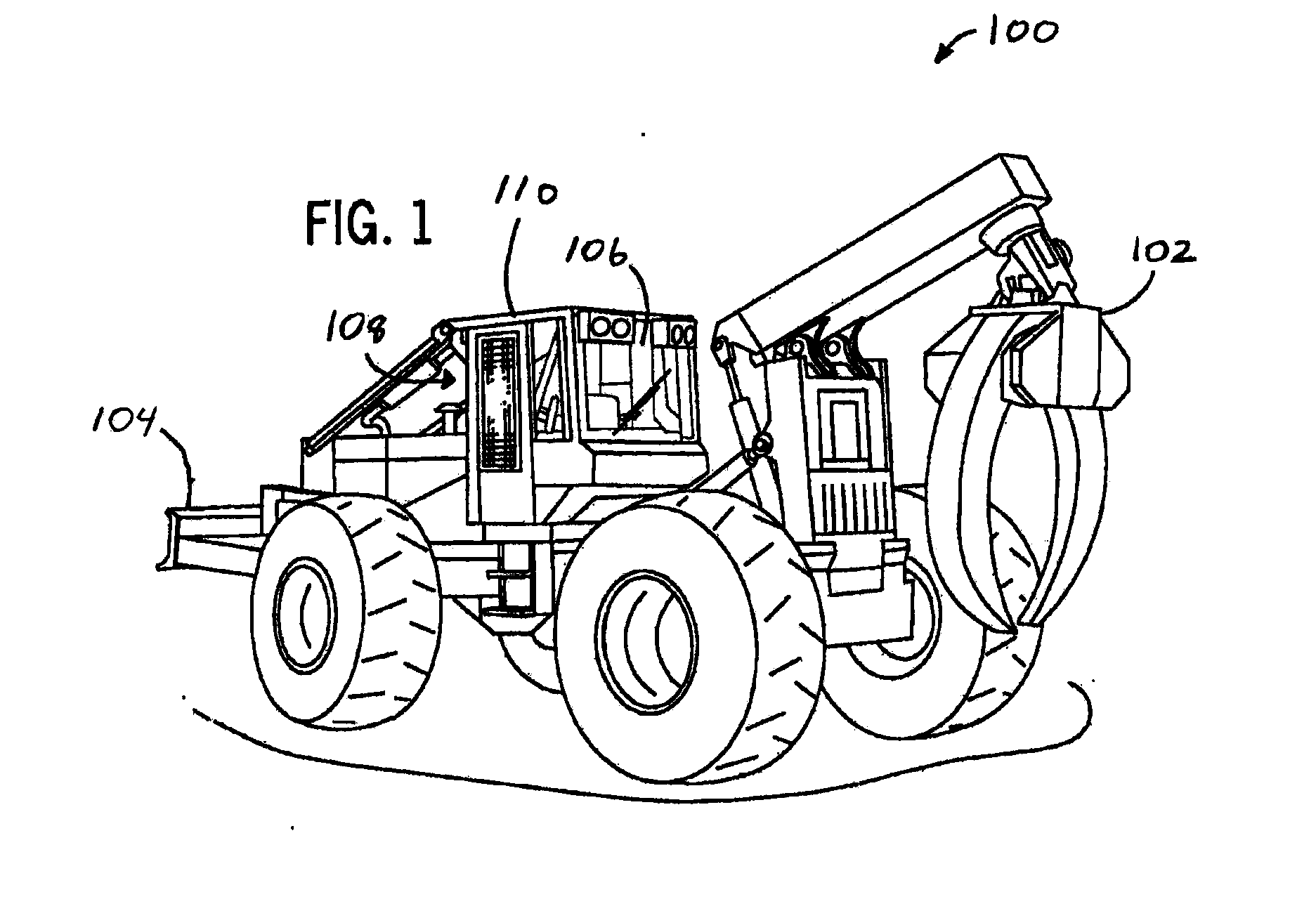Work vehicle HVAC control based on operator seat direction
a technology for controlling the hvac system of the work vehicle and the seat direction, which is applied in the direction of vessel parts, transportation and packaging, vessel construction, etc., can solve the problems of unsafe conditions, unnecessarily complex and expensive overbuilt systems, and unnecessary labor and distraction risk
- Summary
- Abstract
- Description
- Claims
- Application Information
AI Technical Summary
Benefits of technology
Problems solved by technology
Method used
Image
Examples
Embodiment Construction
[0026]As shown in the accompanying figures of the drawings described above, the following describes one or more example constructions of an HVAC control system, which can be used to automatically control the airflow through an HVAC system of a work vehicle based on the position of the operator's seat. Various modifications to the example construction(s) may be contemplated by one of skill in the art.
[0027]The HVAC control system may be used in any work vehicle wherein the rotation of the operator's seat renders some HVAC ventilation components useful and others extraneous or inefficient. FIG. 1 shows an example work vehicle 100 in which the HVAC control system may be advantageously used. The work vehicle 100 has a front implement 102 and a rear implement 104, and the operator sits in the cabin 110 and looks out the front windscreen 106 to operate the front implement 102 and the rear windscreen 108 to operate the rear implement 104. The HVAC control system may be utilized in various ...
PUM
 Login to View More
Login to View More Abstract
Description
Claims
Application Information
 Login to View More
Login to View More - R&D
- Intellectual Property
- Life Sciences
- Materials
- Tech Scout
- Unparalleled Data Quality
- Higher Quality Content
- 60% Fewer Hallucinations
Browse by: Latest US Patents, China's latest patents, Technical Efficacy Thesaurus, Application Domain, Technology Topic, Popular Technical Reports.
© 2025 PatSnap. All rights reserved.Legal|Privacy policy|Modern Slavery Act Transparency Statement|Sitemap|About US| Contact US: help@patsnap.com



